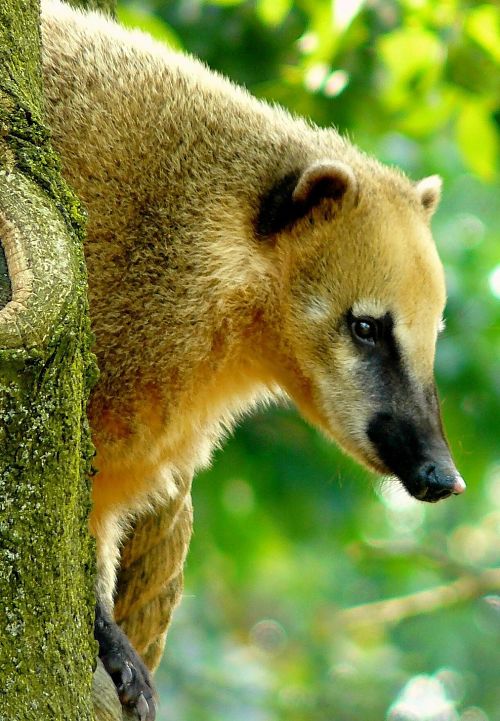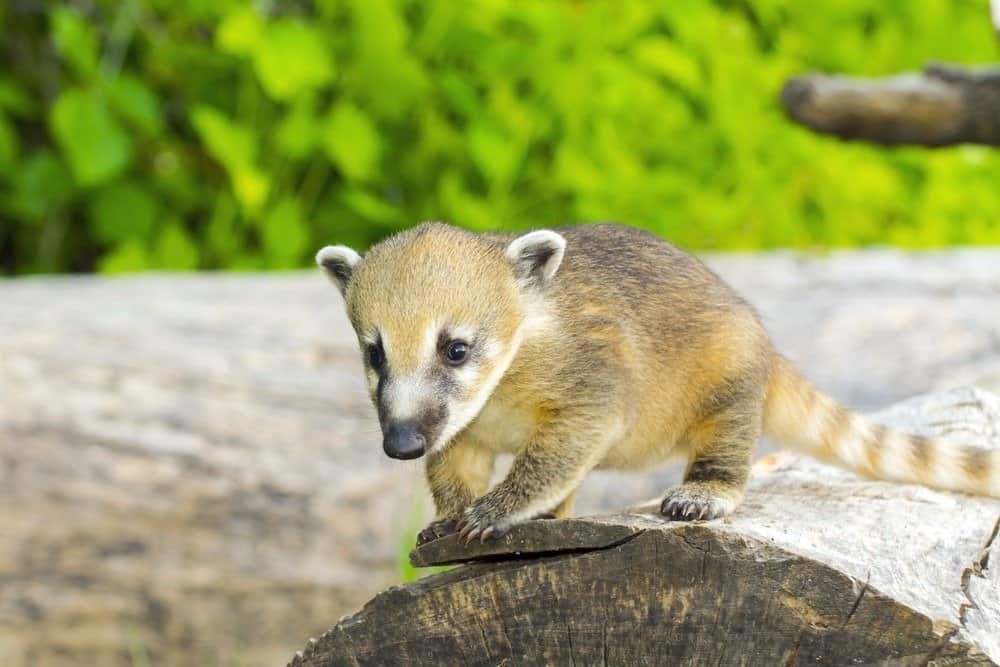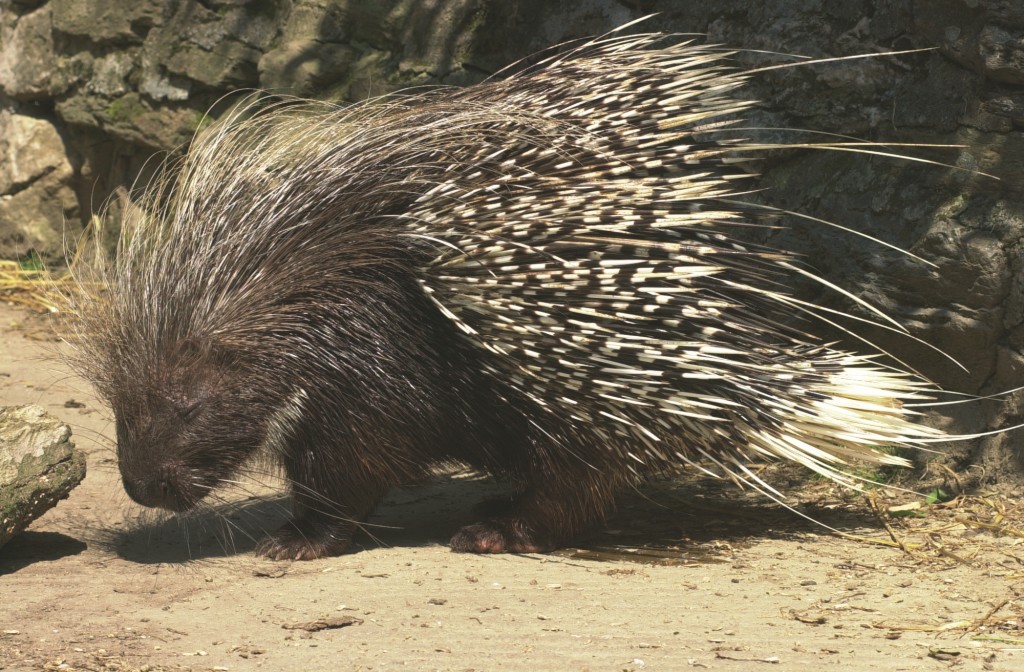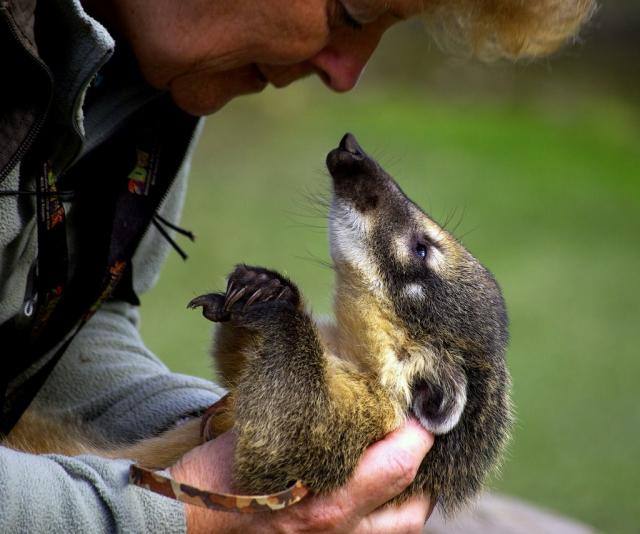Coati animal facts information
Home » Trend » Coati animal facts informationYour Coati animal facts images are ready in this website. Coati animal facts are a topic that is being searched for and liked by netizens now. You can Get the Coati animal facts files here. Download all royalty-free photos.
If you’re searching for coati animal facts pictures information linked to the coati animal facts interest, you have pay a visit to the right blog. Our website frequently provides you with suggestions for seeking the maximum quality video and image content, please kindly hunt and find more enlightening video articles and graphics that match your interests.
Coati Animal Facts. Ancient mayans believed that the coati had supernatural powers including a belief that they could talk. The snout is elongated and dark. The name coatimundi comes from the tupian languages of brazil, where it means lone coati. Coatis are omnivorous and a lot of different things make up their diet.
 Mexican Raccoon Animal Facts Encyclopedia From animalfactsencyclopedia.com
Mexican Raccoon Animal Facts Encyclopedia From animalfactsencyclopedia.com
There are 4 species of coati that are native to north, central and south america. The coati is a member of the same family as the kinkajou, ringtail and red pandas. Weighing as much as a large housecat, these mostly diurnal mammals are native to central and south america, and parts of the southwestern us. Coatis are versatile animals found in a variety of vegetation ranging from thorn scrub, moist tropical forest, and grassland areas stretching from southwestern through central and south america to northern argentina. Coatis are diurnal animals meaning they are most active during the day. Coatis do eat similar things such as insects, fruit, birds and roots.
They are likely to play a significant role in dispersing seeds around and providing food to their natural predators who are animals such as maned wolves, boa constrictors, anacondas, mountain.
Its coat is tawny red in color with a black face. There are 4 species of coati that are native to north, central and south america. They are found only on the american continent and are usually distinguished by their elongated nose that helps them feed themselves while searching for food. Both of these creatures have sharp teeth and claws and are very agile. The coati�s long, highly mobile snout is well adapted to investigating crevices and holes, and they. Coatis are versatile animals found in a variety of vegetation ranging from thorn scrub, moist tropical forest, and grassland areas stretching from southwestern through central and south america to northern argentina.
 Source: burrard-lucas.com
Source: burrard-lucas.com
The male coati measures about 73 to 136 centimeters (29 to 54 inches) in length —half of which is tail—and weighs roughly 4.5 to 11 kilograms (10 to 24 pounds). Their coat varies in color and can be grey, brown, red and whitish. The south american coati is a member of the raccoon family that lives in south america. The snout is darker in color, and they may not have any rings on their tails. Coatis are versatile animals found in a variety of vegetation ranging from thorn scrub, moist tropical forest, and grassland areas stretching from southwestern through central and south america to northern argentina.
 Source: animalfactsencyclopedia.com
Source: animalfactsencyclopedia.com
The south american coati is very slightly smaller and may be reddish in color. Its coat is tawny red in color with a black face. Coatis are versatile animals found in a variety of vegetation ranging from thorn scrub, moist tropical forest, and grassland areas stretching from southwestern through central and south america to northern argentina. The coati�s long, highly mobile snout is well adapted to investigating crevices and holes, and they. Coatis are omnivorous and a lot of different things make up their diet.
 Source: elelur.com
Source: elelur.com
Coati, (genus nasua), any of three species of omnivore related to raccoons (family procyonidae). The coati is a member of the same family as the kinkajou, ringtail and red pandas. Coatis are diurnal animals meaning they are most active during the day. They are found only on the american continent and are usually distinguished by their elongated nose that helps them feed themselves while searching for food. Coatis, also known as coatimundis, are members of the family procyonidae in the genera nasua and nasuella.
 Source: a-z-animals.com
Source: a-z-animals.com
Their coat varies in color and can be grey, brown, red and whitish. They are diurnal mammals native to south america, central america, mexico, and the southwestern united states. Ideally, coatis should have a large indoor and outdoor enclosure; The coati is a member of the same family as the kinkajou, ringtail and red pandas. They live in the trees and scrub lands, but aren’t too fussy about where they call home, just like the raccoon.
 Source: britannica.com
Source: britannica.com
The coati�s face has black and gray markings with a white spot above and below each eye, on each cheek and around the end of the muzzle. Ideally, coatis should have a large indoor and outdoor enclosure; Their coat varies in color and can be grey, brown, red and whitish. Its coat is tawny red in color with a black face. The female is somewhat smaller.
 Source: animalia-life.com
Source: animalia-life.com
Coatis are diurnal animals meaning they are most active during the day. Coati, (genus nasua), any of three species of omnivore related to raccoons (family procyonidae). It can weigh between 4.4 and 16 pounds, with length of up to 44 inches. A coatimundi commonly called a coati (nasua) is a close relative of the raccoon family belonging to the genus nasua and nasuella and order carnivora. The south american coati is very slightly smaller and may be reddish in color.
 Source: porfell.co.uk
Source: porfell.co.uk
Depending on the species, coati can be found in the tropical rainforests,. Coatis are omnivorous and a lot of different things make up their diet. There are four species of coati: Tail measures the half of the total body length. Among the coati animal facts are that coatis have a critical role to play in the ecological system;
 Source: porfell.co.uk
Source: porfell.co.uk
The coati is closely related to the raccoon. It can weigh between 4.4 and 16 pounds, with length of up to 44 inches. Coatis, also known as coatimundis, are members of the family procyonidae in the genera nasua and nasuella. The coati�s face has black and gray markings with a white spot above and below each eye, on each cheek and around the end of the muzzle. Even with appropriate housing, some coatis can become stressed;
 Source: almrsal.com
Source: almrsal.com
They are likely to play a significant role in dispersing seeds around and providing food to their natural predators who are animals such as maned wolves, boa constrictors, anacondas, mountain. The tail is banded with black rings. Among the coati animal facts are that coatis have a critical role to play in the ecological system; But you no doubt know about the mammal�s famous family. And like its cousin, this mammal is the size of a.
This site is an open community for users to do sharing their favorite wallpapers on the internet, all images or pictures in this website are for personal wallpaper use only, it is stricly prohibited to use this wallpaper for commercial purposes, if you are the author and find this image is shared without your permission, please kindly raise a DMCA report to Us.
If you find this site helpful, please support us by sharing this posts to your own social media accounts like Facebook, Instagram and so on or you can also save this blog page with the title coati animal facts by using Ctrl + D for devices a laptop with a Windows operating system or Command + D for laptops with an Apple operating system. If you use a smartphone, you can also use the drawer menu of the browser you are using. Whether it’s a Windows, Mac, iOS or Android operating system, you will still be able to bookmark this website.
Category
Related By Category
- Anime like cowboy bebop information
- Best anime gifs information
- Do animals cry information
- Arc animal rescue information
- Anime thriller genre information
- Dyson v7 animal black friday information
- Copyright free cartoon animal images information
- Fantastic four the animated series episodes information
- Dyson v11 animal black friday 2019 information
- Coniferous forest animals information